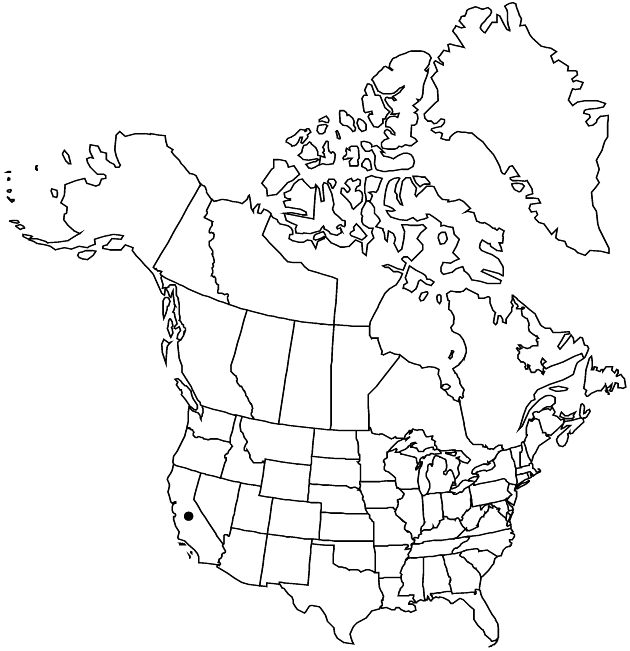Difference between revisions of "Baccharis malibuensis"
Aliso 14: 202, fig. 3. 1996.
FNA>Volume Importer |
FNA>Volume Importer |
||
| Line 25: | Line 25: | ||
|distribution=Calif. | |distribution=Calif. | ||
|discussion=<p>Of conservation concern.</p><!-- | |discussion=<p>Of conservation concern.</p><!-- | ||
| − | --><p>Baccharis malibuensis is known only from the Malibu Creek drainage area in the Santa Monica Mountains (Los Angeles County). It is distinguished by its narrow, often conduplicate and glabrate leaves, cylindric arrays, and summer flowering. According to Beauchamp and Henrickson, it appears to be closely related to and possibly derived from B. plummerae, from which it differs primarily in leaf size, teeth, and indument.</p> | + | --><p><i>Baccharis malibuensis</i> is known only from the Malibu Creek drainage area in the Santa Monica Mountains (Los Angeles County). It is distinguished by its narrow, often conduplicate and glabrate leaves, cylindric arrays, and summer flowering. According to Beauchamp and Henrickson, it appears to be closely related to and possibly derived from <i>B. plummerae</i>, from which it differs primarily in leaf size, teeth, and indument.</p> |
|tables= | |tables= | ||
|references= | |references= | ||
| Line 49: | Line 49: | ||
|publication year=1996 | |publication year=1996 | ||
|special status= | |special status= | ||
| − | |source xml=https://jpend@bitbucket.org/aafc-mbb/fna-data-curation.git/src/ | + | |source xml=https://jpend@bitbucket.org/aafc-mbb/fna-data-curation.git/src/8f726806613d60c220dc4493de13607dd3150896/coarse_grained_fna_xml/V19-20-21/V20_17.xml |
|tribe=Asteraceae tribe Astereae | |tribe=Asteraceae tribe Astereae | ||
|genus=Baccharis | |genus=Baccharis | ||
Revision as of 16:21, 18 September 2019
Shrubs, 40–130(–210) cm (branched near bases). Stems erect to arching, striate-angled, glabrous or sparsely villous distally (hairs short, spreading). Leaves present at flowering (sparse); short-petiolate; blades (1- or 3-nerved) linear to linear-oblanceolate, (15–)20–45(–65) × 1–4(–5) mm, bases narrowly attenuate, margins entire or weakly serrate, apices acute or acuminate (crustose); faces glabrous or sometimes sparsely pilose (hairs 2-seriate), adaxial gland-dotted (in pits; distal leaves reduced, crowded). Heads in cylindric paniculiform arrays. Involucres turbinate; staminate ca. 5 mm, pistillate ca. 5 mm. Phyllaries linear-lanceolate, 2–5 mm, margins yellowish white, scarious, medians green, apices becoming brown with age, ciliate distally. Staminate florets 23–36; corollas 3.7–4.5 mm. Pistillate florets 35–38; corollas 2.2–4.2 mm. Cypselae 2.4–3 mm, 5-nerved, faces with thick, irregular, glandlike hairs; pappi 6.5–7.5 mm.
Phenology: Flowering Aug–Sep.
Habitat: Grassy openings, chaparral
Elevation: 100–300 m
Discussion
Of conservation concern.
Baccharis malibuensis is known only from the Malibu Creek drainage area in the Santa Monica Mountains (Los Angeles County). It is distinguished by its narrow, often conduplicate and glabrate leaves, cylindric arrays, and summer flowering. According to Beauchamp and Henrickson, it appears to be closely related to and possibly derived from B. plummerae, from which it differs primarily in leaf size, teeth, and indument.
Selected References
None.
